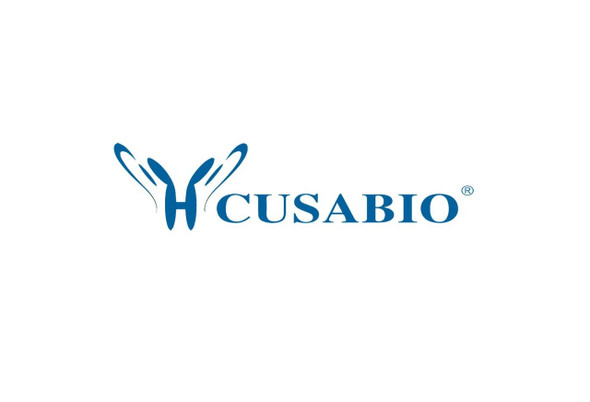Cusabio Arabidopsis thaliana Recombinants
Recombinant Arabidopsis thaliana Probable WRKY transcription factor 40 (WRKY40) | CSB-EP874370DOA
- SKU:
- CSB-EP874370DOA
- Availability:
- 13 - 23 Working Days
Description
Recombinant Arabidopsis thaliana Probable WRKY transcription factor 40 (WRKY40) | CSB-EP874370DOA | Cusabio
Alternative Name(s): WRKY DNA-binding protein 40
Gene Names: WRKY40
Research Areas: Others
Organism: Arabidopsis thaliana (Mouse-ear cress)
AA Sequence: MDQYSSSLVDTSLDLTIGVTRMRVEEDPPTSALVEELNRVSAENKKLSEMLTLMCDNYNVLRKQLMEYVNKSNITERDQISPPKKRKSPAREDAFSCAVIGGVSESSSTDQDEYLCKKQREETVVKEKVSRVYYKTEASDTTLVVKDGYQWRKYGQKVTRDNPSPRAYFKCACAPSCSVKKKVQRSVEDQSVLVATYEGEHNHPMPSQIDSNNGLNRHISHGGSASTPVAANRRSSLTVPVTTVDMIESKKVTSPTSRIDFPQVQKLLVEQMASSLTKDPNFTAALAAAVTGKLYQQNHTEK
Source: E.coli
Tag Info: N-terminal 6xHis-tagged
Expression Region: 1-302aa
Sequence Info: Full Length
MW: 37.7 kDa
Purity: Greater than 90% as determined by SDS-PAGE.
Relevance: Transcription factor. Interacts specifically with the W box (5'-(T)TGAC[CT]-3'), a frequently occurring elicitor-responsive cis-acting elent .
Reference: Arabidopsis thaliana transcription factor WRKY40.Hikaru S., Somssich I.E. Sequence and analysis of chromosome 1 of the plant Arabidopsis thaliana.Theologis A., Ecker J.R., Palm C.J., Federspiel N.A., Kaul S., White O., Alonso J., Altafi H., Araujo R., Bowman C.L., Brooks S.Y., Buehler E., Chan A., Chao Q., Chen H., Cheuk R.F., Chin C.W., Chung M.K. , Conn L., Conway A.B., Conway A.R., Creasy T.H., Dewar K., Dunn P., Etgu P., Feldblyum T.V., Feng J.-D., Fong B., Fujii C.Y., Gill J.E., Goldsmith A.D., Haas B., Hansen N.F., Hughes B., Huizar L., Hunter J.L., Jenkins J., Johnson-Hopson C., Khan S., Khaykin E., Kim C.J., Koo H.L., Kremenetskaia I., Kurtz D.B., Kwan A., Lam B., Langin-Hooper S., Lee A., Lee J.M., Lenz C.A., Li J.H., Li Y.-P., Lin X., Liu S.X., Liu Z.A., Luros J.S., Maiti R., Marziali A., Militscher J., Miranda M., Nguyen M., Nierman W.C., Osborne B.I., Pai G., Peterson J., Pham P.K., Rizzo M., Rooney T., Rowley D., Sakano H., Salzberg S.L., Schwartz J.R., Shinn P., Southwick A.M., Sun H., Tallon L.J., Tambunga G., Toriumi M.J., Town C.D., Utterback T., Van Aken S., Vaysberg M., Vysotskaia V.S., Walker M., Wu D., Yu G., Fraser C.M., Venter J.C., Davis R.W.Nature 408:816-820(2000)
Storage: The shelf life is related to many factors, storage state, buffer ingredients, storage temperature and the stability of the protein itself. Generally, the shelf life of liquid form is 6 months at -20?/-80?. The shelf life of lyophilized form is 12 months at -20?/-80?.
Notes: Repeated freezing and thawing is not recommended. Store working aliquots at 4? for up to one week.
Function: Transcription factor. Interacts specifically with the W box (5'-(T)TGAC[CT]-3'), a frequently occurring elicitor-responsive cis-acting element (By similarity).
Involvement in disease:
Subcellular Location: Nucleus
Protein Families:
Tissue Specificity:
Paythway:
Form: Liquid or Lyophilized powder
Buffer: If the delivery form is liquid, the default storage buffer is Tris/PBS-based buffer, 5%-50% glycerol. If the delivery form is lyophilized powder, the buffer before lyophilization is Tris/PBS-based buffer, 6% Trehalose, pH 8.0.
Reconstitution: We recommend that this vial be briefly centrifuged prior to opening to bring the contents to the bottom. Please reconstitute protein in deionized sterile water to a concentration of 0.1-1.0 mg/mL.We recommend to add 5-50% of glycerol (final concentration) and aliquot for long-term storage at -20?/-80?. Our default final concentration of glycerol is 50%. Customers could use it as reference.
Uniprot ID: Q9SAH7
HGNC Database Link: N/A
UniGene Database Link: UniGene
KEGG Database Link: KEGG
STRING Database Link: STRING
OMIM Database Link: N/A









